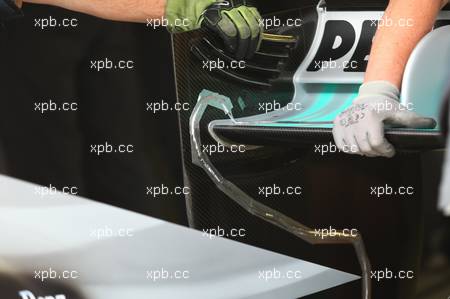
Of course it’s a 2-dimensional concept, and I know the real world facts are far from that. Nonetheless, one has to start somewhere. I’ve been reminded that an airfoil’s pressure distribution is constant with speed, and so the pressure ratio between inlet and outlet will always be constant. But does that hold for multi element “air boxes”? Then there are the 3-dimensional effects, such as the tip vortexes and the disturbed under-wing flow (hardly a “free stream”).
I wonder what the louvers in the end plates on the MGP W01 do, and what the cutouts in the end plates right behind the upper elements are for, and why the outlet slots on the back of the upper element are strangely curved and placed so high. All in all, the flow near the rearward face of the upper element seams sufficiently complex to have an influence on the pressure at the outlet slots. Also how hard must the slots blow to stall (separate the boundary layer) the upper element if the boundary layer is laminar (doubtful) or turbulent. Thus, my question in this post:
viewtopic.php?f=6&t=8429&p=164989#p164989
Comments appreciated.








